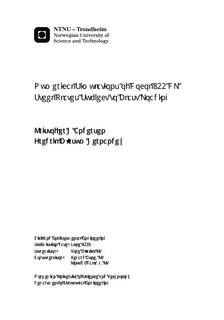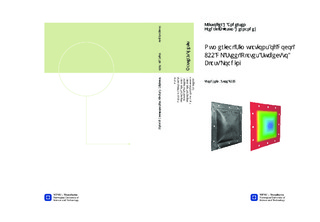| dc.contributor.advisor | Børvik, Tore | nb_NO |
| dc.contributor.advisor | Aune, Vegard | nb_NO |
| dc.contributor.advisor | Rakvåg, Knut G. | nb_NO |
| dc.contributor.author | Andersen, Kristoffer H | nb_NO |
| dc.contributor.author | Hernandez, Fredrik Børsum | nb_NO |
| dc.date.accessioned | 2014-12-19T12:02:43Z | |
| dc.date.available | 2014-12-19T12:02:43Z | |
| dc.date.created | 2013-09-19 | nb_NO |
| dc.date.issued | 2013 | nb_NO |
| dc.identifier | 649770 | nb_NO |
| dc.identifier | ntnudaim:9147 | nb_NO |
| dc.identifier.uri | http://hdl.handle.net/11250/237305 | |
| dc.description.abstract | The main objective in this study was to investigate how the deformation of Docol 600 DL steel plates subject to blast loading can be accurately recreated with different numerical simulations. An initial experiment was undertaken employing a gas gun to simulate the blast loads. The experiments failed to properly emulate a proper blast load, but the experiment served as an initial benchmark for calibration of the numerical models.Focus shifted on to simulating experiments performed at Raufoss in 2010 by Rakvåg. Experiments on quadratic 400mm by 400mm, 2mm thick Docol 600 DL steel plates were performed for standoffs at 300mm, 400mm, 450mm and 550mm. Material models for the steel plates were determined from previous work done at SIMLab.Numerical simulations in LS-DYNA and IMPETUS were utilized with a pure Lagrangian approach, an uncoupled Eulerian-Lagrangian approach, a coupled Eulerian-Lagrangian and a discrete particle method. The pure Lagrangian simulations were based on data from the CONWEP standard, thus it failed to properly describe the charge geometry and consequently misrepresented the properties of the blast load. The uncoupled and coupled Eulerian-Lagrangian simulations properly described the charge geometry, but a requirement of a sufficiently fine discretization of the Eulerian mesh rendered full 3D simulations with a high computational demand. A 2D to 3D mapping technique in the Eulerian domain was successfully completed to reduce the computational time. The discrete particle approach yielded the most accurate results while being the easiest to define numerically.Employing the different numerical techniques revealed that the main source of error in recreating expected deformation lies in the capability of properly describing the blast load conditions. | nb_NO |
| dc.language | eng | nb_NO |
| dc.publisher | Institutt for konstruksjonsteknikk | nb_NO |
| dc.title | Numerical Simulations of Docol 600 DL Steel Plates Subject to Blast Loading | nb_NO |
| dc.type | Master thesis | nb_NO |
| dc.source.pagenumber | 234 | nb_NO |
| dc.contributor.department | Norges teknisk-naturvitenskapelige universitet, Fakultet for ingeniørvitenskap og teknologi, Institutt for konstruksjonsteknikk | nb_NO |

